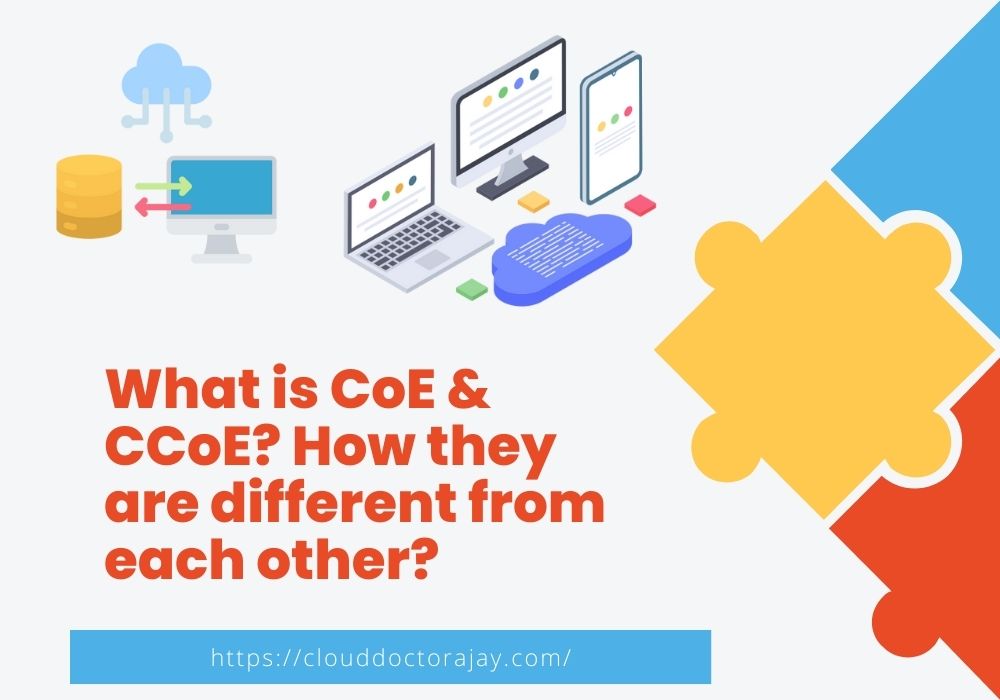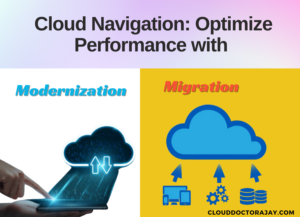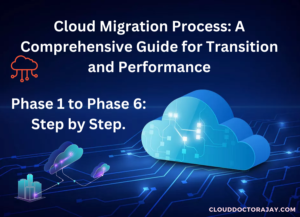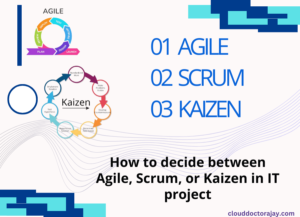CoE & CCoE: Differences and Roles
CoE (Center of Excellence)
The following are some recommended positions and duties for a department inside a Center of Excellence (CoE):
Positions:
- CoE Lead/Manager: Ensures that the CoE department is in line with corporate objectives, establishes strategy, and leads the department.
- Subject Matter Experts (SMEs): Offer in-depth knowledge in particular domains (e.g., analytics, cloud, ERP).
- Solution Architects: Create and put into action solutions that satisfy organizational needs.
- Technical Leads: Manage projects’ technical details and guarantee high-quality output.
- Business Analysts: Collaborate with stakeholders to determine the requirements and needs of the business.
- CoE Assistance Specialists: Offer continuous upkeep and assistance for solutions that have been put into place.
Responsibilities:
- Strategy and Planning: Create and uphold a CoE strategy in line with corporate objectives.
- Solution Development: Create, develop, and put into practice solutions that satisfy organizational needs.
- Best Practices: Create and uphold best practices for the creation and application of solutions.
- Information Management: Create and keep up a database of answers, best practices, and acquired information.
- Training and Enablement: Educate stakeholders on applied solutions through training and enablement.
- Support and Maintenance: Provide continuous support and upkeep for implemented solutions.
- Innovation: Keep abreast of market developments and new technological advancements, and spot areas that could use innovation.
- Governance: Verify adherence to the rules and guidelines of organizational governance.
- Collaboration: Work together with stakeholders to determine the requirements and needs of the business.
- Continuous Improvement: Evaluate and enhance CoE procedures and systems on a constant basis.
Keep in mind that these positions and duties could change based on the particular requirements and objectives of the company.
Cloud Navigation: Optimize Performance with Modernization vs. Migration
CCoE (Cloud Center of Excellence)
The following are the functions and duties of a department inside a Cloud Center of Excellence (CCoE):
Roles:
- Cloud Architect
- Cloud Engineer
- Cloud Security Specialist
- Cloud Compliance Officer
- Cloud Cost Optimization Specialist
- Cloud Training and Adoption Specialist
- Cloud Governance and Policy Specialist
- Cloud Service Manager
Accountabilities:
- Cloud Strategy and Governance:
- Create and uphold a roadmap and strategy for the cloud.
- Create a framework for cloud governance and policies.
- Ensure that cloud usage complies with legal and organizational criteria.
- Cloud Architecture and Design:
- Create and execute cloud workload and application architectures.
- Verify that cloud architecture complies with best practices and corporate requirements.
- Cloud Security and Compliance:
- Guarantee cloud security and adherence to regulatory and corporate requirements.
- Implement cloud security oversight and controls.
- Cost Optimization for Cloud Computing:
- Track and minimize cloud expenses.
- Create and put into action cost-saving cloud strategies.
- Cloud Training and Adoption:
- Create and conduct employee cloud training sessions.
- Encourage cloud use within the company.
- Cloud Service Management:
- Create and execute cloud service level agreements (SLAs).
- Oversee cloud services and guarantee service quality.
- Cloud Innovation and Research:
- Investigate and assess novel cloud innovations and technologies.
- Create proof-of-concepts (POCs) for novel cloud computing innovations.
Additional Duties:
- Working with business stakeholders to comprehend the needs for the cloud.
- Creation of best practices, guidelines, and standards for the cloud.
- Managing partners and cloud vendors.
- Business continuity and cloud disaster recovery planning.
- Cloud metrics & reporting.
Keep in mind that the precise roles and responsibilities may change based on the size, sector, and cloud maturity level of the organization.
How to decide between Agile, Scrum, or Kaizen in IT project
CoE vs. CCoE: Understanding the Differences
CoE (Center of Excellence)
- Focus: Particular business area or technology (e.g., cybersecurity, analytics, ERP).
- Scope: Enterprise-wide, spanning several departments and functions.
- Responsibilities:
- Develop & maintain knowledge in the particular field.
- Create standards and best practices.
- Direct and assist various teams.
- Promote innovation and improvement.
- Objectives:
- Boost effectiveness and efficiency.
- Strengthen decision-making.
- Raise customer satisfaction.
CCoE (Cloud Center of Excellence)
- Focus: Cloud computing services and technologies, such as Google Cloud, AWS, OCI, and Azure.
- Scope: Enterprise-wide cloud adoption and management.
- Responsibilities:
- Create and preserve cloud knowledge.
- Set up cloud governance and compliance.
- Offer advice on cloud architecture and design.
- Control cloud expenses and optimization.
- Objectives:
- Hasten cloud adoption.
- Guarantee cloud security and compliance.
- Optimize cloud performance and costs.
Key Differences:
- Focus: CCoE is concentrated on cloud computing, whereas CoE is concentrated on a particular technology or business domain.
- Scope: While CCoE is mostly focused on cloud adoption and management, CoE has a wider reach that includes several departments and functions.
- Objectives: CCoE goals are primarily focused on cloud adoption and optimization, while CoE goals are more all-encompassing, seeking to increase efficiency and effectiveness.
Conclusion
In conclusion, CCoE is a dedicated department that focuses exclusively on cloud computing, whereas CoE is a more comprehensive term that can span a variety of areas of competence.




